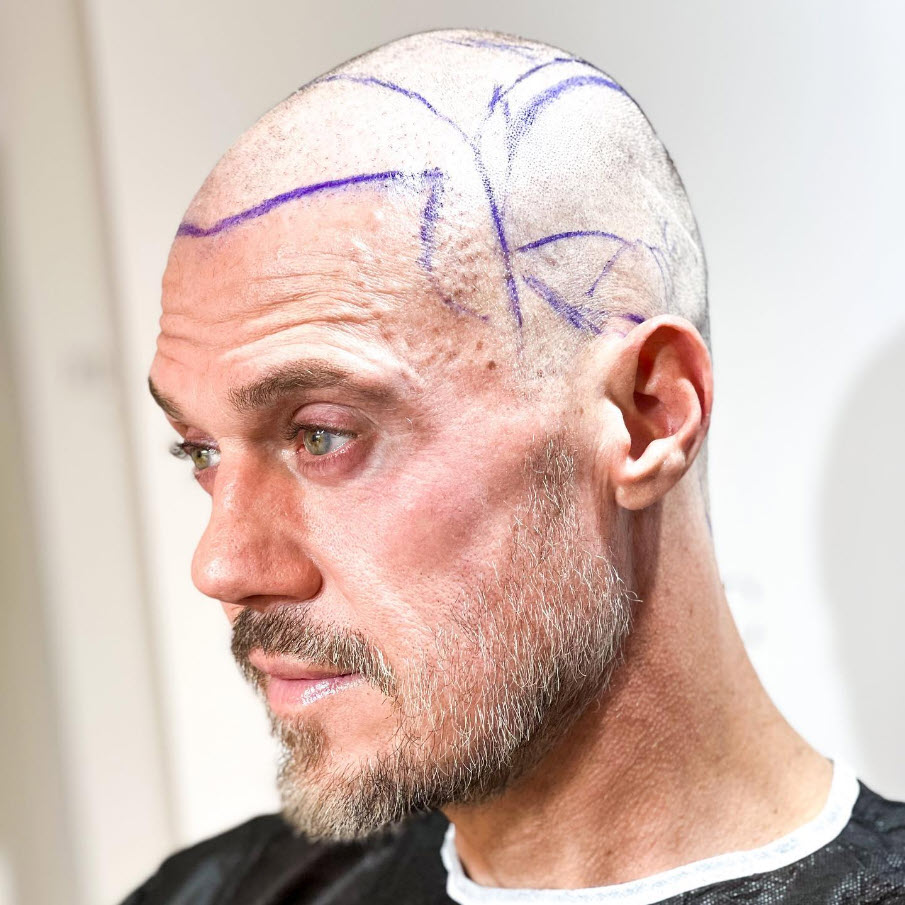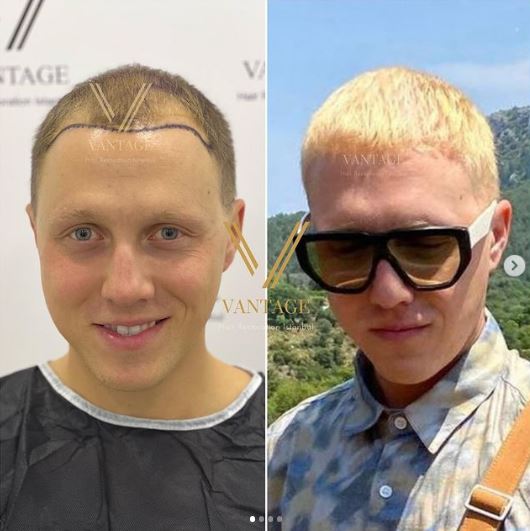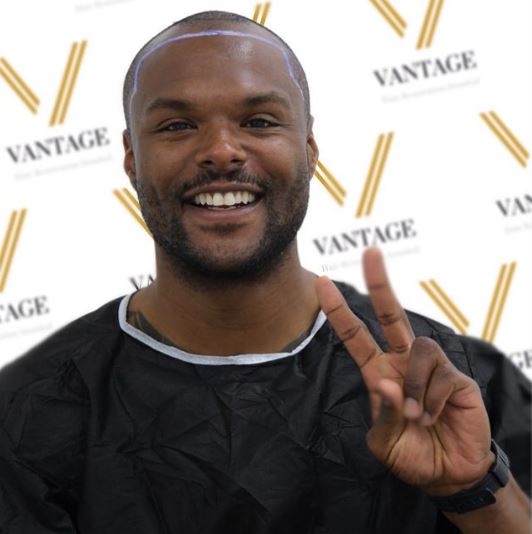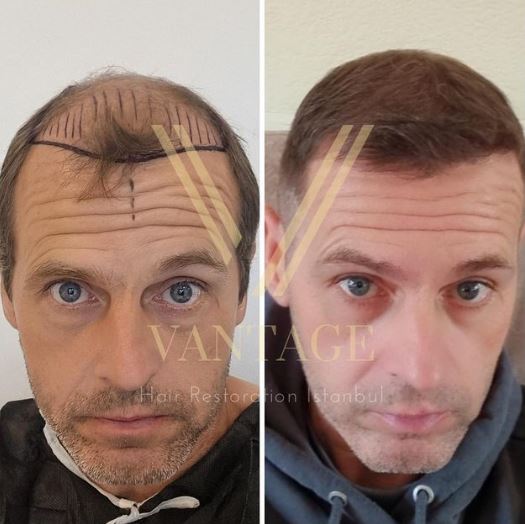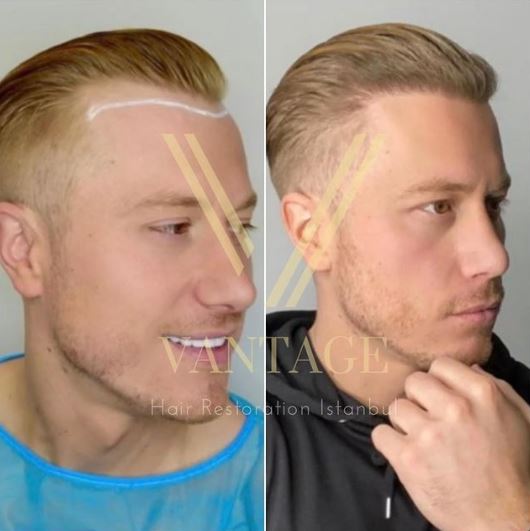
Hair loss can be a challenging experience, but hair transplant procedures offer a permanent and effective solution to restore hair growth. The process involves extracting hair follicles and transplanting them individually into microchannels to achieve the desired density. However, some individuals, especially those coping with hair transplant trypophobia, may find the procedure frustrating due to the small size of the channels.
In this post, we aim to provide a detailed understanding of hair transplant trypophobia, including what it is, what triggers it, and how to avoid it. So, if you’re considering a hair transplant, keep reading to learn more about this phenomenon and how to ensure a smooth and stress-free experience.
What is hair transplant trypophobia?
Hair transplant trypophobia meaning a condition characterized by fear and discomfort related to microchannels, dense bumps, and other sensations. Specifically, individuals with trypophobia may experience disgust, fear, or extreme discomfort towards small holes that may appear in the donor and transplanted area of the scalp during a hair transplant, particularly in the FUE method. It is important to note that this condition may trigger anxiety and panic attacks, and individuals experiencing these symptoms should seek professional help from a qualified healthcare provider before getting a hair transplant.
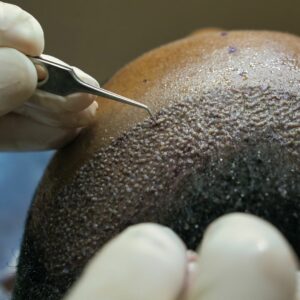
Why does hair transplant cause trypophobia?
During a hair transplant procedure, tiny holes can occur while grafts are being extracted from the donor area and during the creation of microchannels for FUE using a micro-punch tool of 0.7-1.0 mm. While this process may not be an issue for most people, it could be difficult for those who suffer from trypophobia. However, it’s important to note that the presence of these small holes does not mean that individuals with trypophobia cannot get a hair transplant to reverse balding or male pattern hair loss. Though these holes are visible, they are nothing more than tiny dots. Nonetheless, it may still cause discomfort for patients with trypophobia.
What are the symptoms of hair transplant trypophobia?
Patients experiencing hair transplant trypophobia typically exhibit symptoms similar to those of any other type of trypophobia. These symptoms may include nausea, shortness of breath, itching, discomfort, and more. They can be disruptive and interfere with daily interactions. Luckily, any trypophobia holes resulting from a hair transplant procedure will typically fade away within a short period of time.
What is trypophobia meaning?
Trypophobia is an intense fear of small, densely packed holes. The underlying reasons behind this phobia are still unknown, but it can have a significant impact on a person’s daily life and may be classified as a form of anxiety disorder. [1]
How common is trypophobia?
Trypophobia is a condition that affects many people, and while it was only first recognized in 2005, there are steps that can be taken to help those who experience it. In the US, 12.5% of adults face this condition, but with proper support and understanding, it’s possible to work towards creating a more inclusive and supportive environment for everyone.[2]
Causes of Trypophobia
Although the exact cause of trypophobia is unknown, researchers recognize it as a source of discomfort and fear rather than a phobia. According to some researchers, trypophobia is a fear or sense of impending danger that may arise from small holes, such as those found in worms or parasites. While the exact cause of trypophobia remains uncertain, it is important to understand the potential sources of this type of fear. [3]
Common Symptoms of Trypophobia
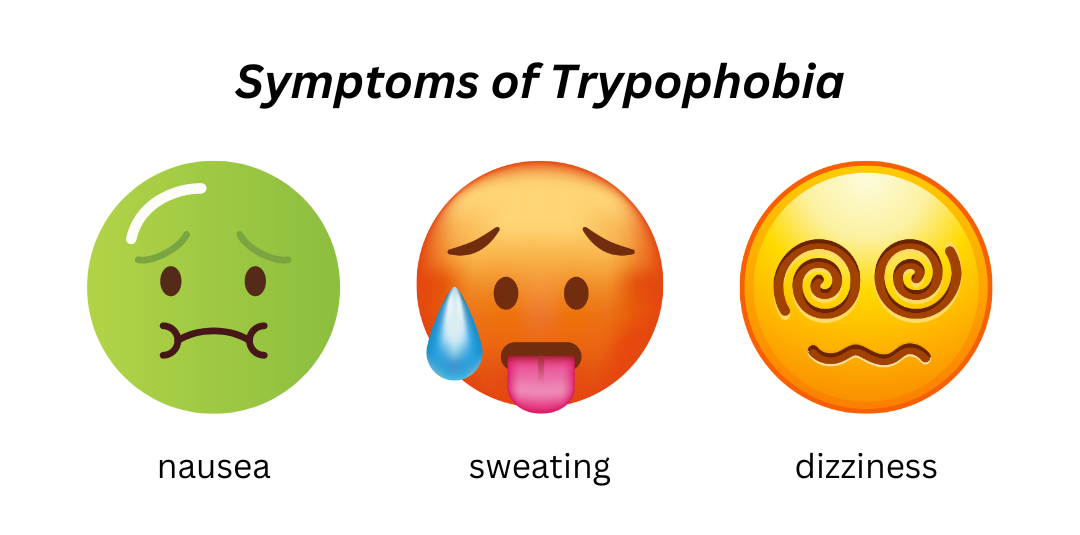
Trypophobia is a condition in which individuals experience intense fear, discomfort, or disgust when confronted with patterns or clusters of small, often symmetrical holes, bumps, or other shapes. These feelings can result in physical symptoms such as nausea, sweating and dizziness, which can be similar to anxiety attacks. [4 & 5]
Types of Trypophobia
When it comes to Trypophobia, there are a variety of different factors that can trigger it. These factors can be classified into three main categories: natural biological factors, man-made factors, and food-related factors. By understanding these different types of triggers, we can gain a better understanding of what causes Trypophobia and how to avoid or manage it. So, let’s take a closer look at each category and explore some examples.
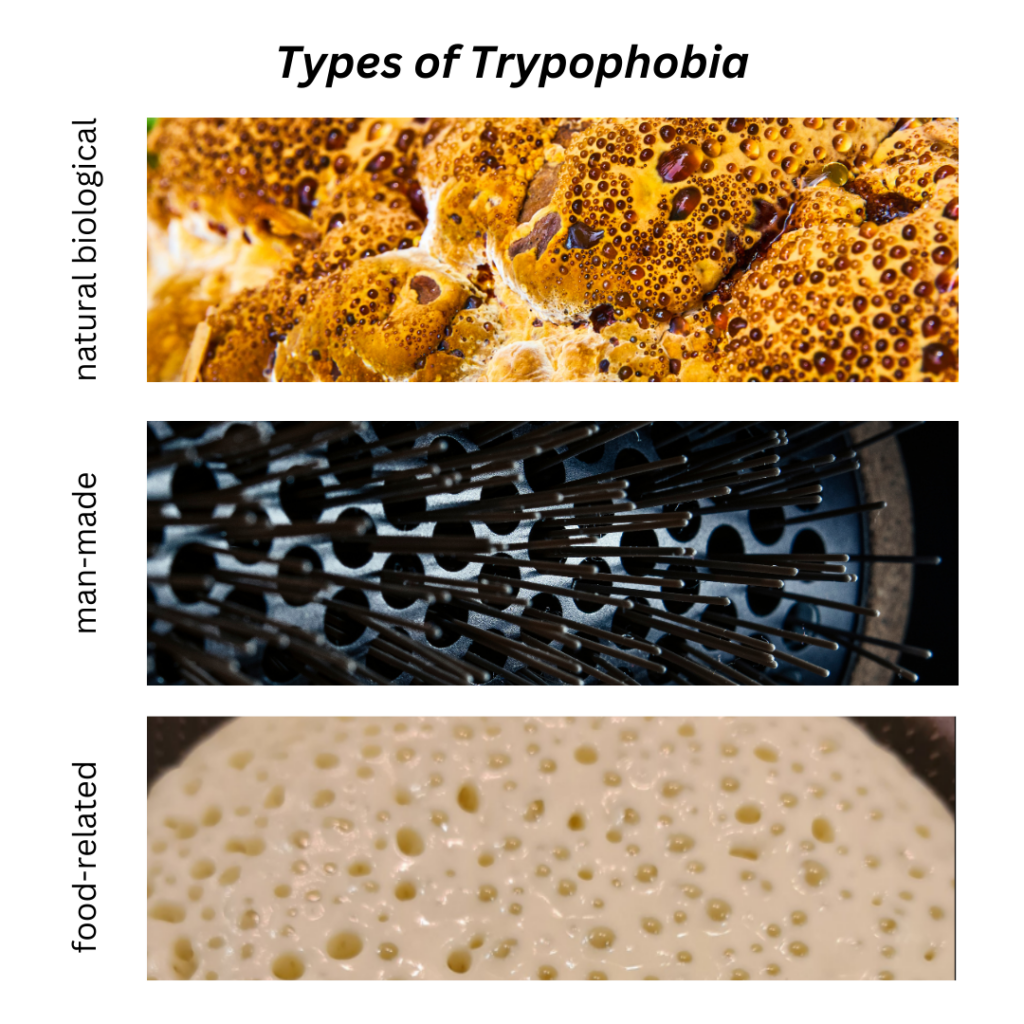
Examples of Trypophobia Triggers
Trypophobia is a condition where specific patterns or clusters of small holes can cause fear or disgust in some individuals. This phobia can be triggered by seemingly harmless things that may not bother most people. For example, people with trypophobia can experience discomfort from seeing things like pomegranate seeds, coral, animal prints, or even small holes in a baked good.
How do you get rid of trypophobia?
Trypophobia is a condition that doesn’t have a specific treatment, so it doesn’t have solid trypophobia cure. Still, seeking professional help is crucial to minimize its symptoms. One effective approach to address trypophobia is cognitive-behavioral therapy (CBT). Mental health professionals trained in CBT can help individuals identify and challenge negative thought patterns associated with trypophobia, which can be beneficial. Understanding the underlying reasons for the fear and identifying specific triggers can be significant steps in managing trypophobia. This self-awareness can inform targeted coping strategies, which can help individuals manage their trypophobia symptoms better.

Treatments for Trypophobia
Systematic desensitization and response prevention is an effective behavioral approach used to treat trypophobia and other phobias. This technique involves gradually exposing individuals to trypophobic stimuli while preventing the dysfunctional reactions they use to combat their phobia.
The process is gradual and systematic, and takes into account the physical, emotional, and behavioral difficulties experienced by individuals. It is important to note that this is not direct exposure, but rather a controlled approach that aims to help individuals overcome their fear of the phobic stimulus.
By gradually exposing individuals to trypophobic stimuli, they can learn to manage their fear in a safe and controlled environment. This approach helps individuals overcome their phobia by desensitizing them to the phobic stimulus and preventing the dysfunctional reactions that can exacerbate their anxiety.
If you or someone you know struggles with trypophobia skin or any other phobia, consider seeking professional help. A trained therapist can guide you through the process of systematic desensitization and response prevention, and help you overcome your fear in a safe and effective way.
What can I do to treat trypophobia before hair transplant?
Getting professional help before undergoing a hair transplant is a wise precaution to avoid triggering trypophobia. You may consider cognitive therapies under the guidance of a specialist or seek medication from your psychiatrist to relieve stress and anxiety. Additionally, practicing relaxation techniques like meditation can be helpful.
Does every hair transplant procedure trigger trypophobia?
Not every hair transplant method triggers trypophobia. Generally, hair transplant trypophobia is triggered by methods that involve the creation of microchannels and making tiny holes. If this is the case, you may want to consider alternative hair transplant methods that do not leave tiny holes. However, keep in mind that the choice of method will depend on the structure of your hair grafts and the extent of your hair loss.
What hair transplant method is the best for patients with trypophobia?
Among all hair transplant methods, DHI stands out as the less likely to trigger trypophobia. This is because the Choi implanter pen is used to ensure precise and individualized implantation of hair follicles, which can minimize the appearance of clustered patterns that may cause discomfort to those with trypophobia. DHI is preferred by many patients due to its ability to produce natural-looking results. The technique is recognized for its ability to avoid harming existing hair follicles and its short recovery time. Consequently, patients can resume their daily routine soon after the procedure.
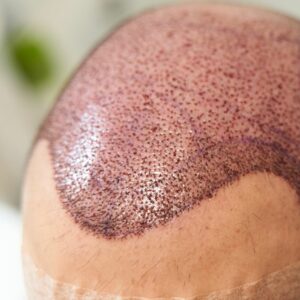
How to deal with hair transplant trypophobia?
When dealing with hair transplant and trypophobia, clear communication is crucial. It’s important to be open and honest with your surgeon about the severity of your situation so that they can take appropriate action. To alleviate any anxiety, gaining a thorough understanding of the hair transplant procedure, including the step-by-step process and the tools used, can be helpful. Moreover, choosing a reputable and comfortable clinic for your hair transplant can make the experience more positive. A professional and supportive environment can help you feel more at ease, and it’s always a good idea to do your research and select a clinic that has a good reputation.
Will hair transplant trypophobia holes go away?
Thanks to the minimally invasive nature of hair transplant procedures, it is likely that the tiny incisions made during the surgery will heal and disappear relatively quickly. However, it is essential to take proper care of the affected area after the procedure to ensure a smooth recovery and help the incisions heal properly.
References:
- Le, An T D (2015) An exploration of trypophobia. PhD thesis, University of Essex. https://repository.essex.ac.uk/16352/
- https://www.nimh.nih.gov/health/statistics/specific-phobia
- Yamada, Y., Sasaki, K. Involuntary protection against dermatosis: A preliminary observation on trypophobia. BMC Res Notes 10, 658 (2017). https://doi.org/10.1186/s13104-017-2953-6
- Wong SMY, Tang EYH, Hui CLM, et al. Excessive fear of clusters of holes, its interaction with stressful life events and the association with anxiety and depressive symptoms: large epidemiological study of young people in Hong Kong. BJPsych Open. 2023;9(5):e151. https://doi:10.1192/bjo.2023.540
- R. Nathan Pipitone, Christopher DiMattina, Emily Renae Martin, Irena Pavela Banai, KaLynn Bellmore & Michelle De Angelis (2022) Evaluating the ‘skin disease-avoidance’ and ‘dangerous animal’ frameworks for understanding trypophobia, Cognition and Emotion, 36:5, 943-956, DOI: 10.1080/02699931.2022.2071236

